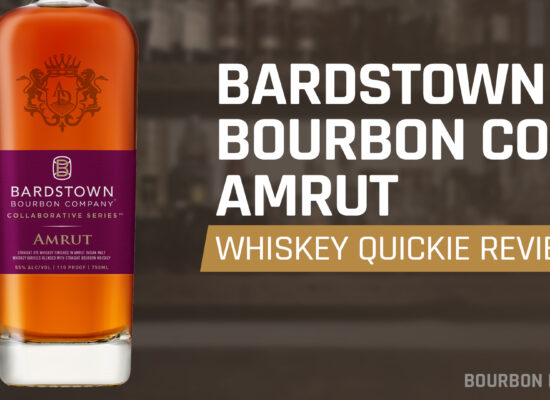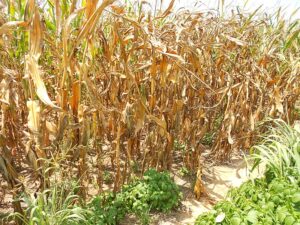
(Credit: CraneStation/Wikimedia Commons/CC By 2.0)
Whiskey, like wine, carries with it a rich tradition of craftsmanship and artistry. However, as the spirits industry evolves, technology is proving to be an essential ally in distilling and production. Modern innovations are reshaping every facet of the whiskey business, from grain management to consumer engagement. This blog explores how technology is transforming the whiskey industry and what these advancements mean for the future of distilling.
Precision Agriculture: Revolutionizing Grain Management
Much like in winemaking, traditional methods in whiskey production have often relied on the experience and intuition of distillers. Now, technological advancements are providing precision tools that enhance grain production and quality.
- Drones and Aerial Imaging: Drones equipped with high-resolution cameras and multispectral sensors offer a detailed view of grain fields. They help distillers assess crop health, monitor soil conditions, and detect issues such as pests or diseases early. By capturing detailed images and data, drones enable targeted interventions, leading to healthier grains and better quality spirits.
- Soil Sensors: Soil sensors are increasingly important for modern grain farming. These devices measure moisture levels, temperature, and nutrient content in real-time. By analyzing this data, distillers can optimize irrigation schedules, apply fertilizers more efficiently, and enhance overall crop health. This precise approach reduces waste and improves grain yield.
- Climate and Weather Forecasting: Predictive analytics and climate modeling have transformed how distillers approach weather-related challenges. Advanced weather forecasting tools allow for anticipating frost, rainfall, and temperature fluctuations. This foresight aids in better planning of harvest times and crop management strategies, ultimately safeguarding grain quality and yield.
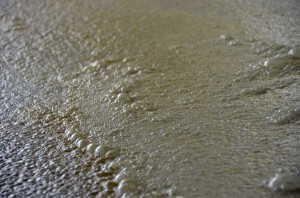
(Credit: Joana Thomas)
Automation and Robotics: Streamlining Production
The production process in distilleries has also experienced significant advancements through automation and robotics, reducing labor intensity and improving efficiency.
- Harvesting Robots: While grape harvesters are well-known in winemaking, the concept is also relevant for grain harvesting. Robots designed to pick grains at optimal ripeness minimize damage and reduce the need for manual labor. They operate efficiently around the clock, leading to a more timely and effective harvest.
- Automated Fermentation Control: Fermentation is a crucial stage in both winemaking and whiskey production. Automated fermentation tanks equipped with sensors and control systems enable distillers to manage temperature, pH levels, and other variables with unparalleled accuracy. This automation ensures consistency in the final product and can lead to improved flavor profiles and overall quality.
- Robotic Bottling and Packaging: The bottling and packaging process in whiskey distilleries has also been transformed by robotics. Automated systems streamline the filling, capping, and labeling of bottles, increasing production speed and reducing human error. These systems help maintain high hygiene standards and ensure that each bottle is consistently filled and sealed.
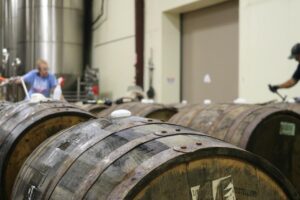
(Credit: Elevate/Pexels)
Data Analytics: Enhancing Decision-Making
Data analytics has become a game-changer in the whiskey industry, offering insights that drive better decision-making and strategic planning.
- Consumer Insights: Leveraging data analytics allows distillers to gain valuable insights into consumer preferences and market trends. By analyzing sales data, social media interactions, and customer reviews, distillers can understand which whiskeys are popular, what marketing strategies are effective, and how to tailor their offerings to meet consumer demands.
- Production Optimization: Data analytics tools enable distillers to track and analyze every stage of production. By examining variables such as fermentation progress, aging conditions, and storage environments, distillers can identify areas for improvement and optimize their processes. This data-driven approach leads to better quality control and more efficient production methods.
Virtual Reality and Augmented Reality: Enhancing the Consumer Experience
Technology is also transforming how consumers interact with whiskey. Virtual reality (VR) and augmented reality (AR) are creating immersive and engaging experiences that deepen the connection between consumers and distilleries.
- Virtual Tours: Virtual reality allows consumers to take immersive tours of distilleries from anywhere in the world. These virtual experiences offer a behind-the-scenes look at the distilling process, allowing potential customers to explore grain fields, distillation rooms, and aging cellars without leaving their homes. This not only enhances brand engagement but also broadens the reach of distilleries to a global audience.
- Augmented Reality Labels: Augmented reality adds a new dimension to whiskey labels. By using a smartphone or tablet to scan a bottle, consumers can access interactive content such as tasting notes, distiller stories, and virtual distillery tours. This technology enriches the consumer experience and provides additional information that can influence purchasing decisions.
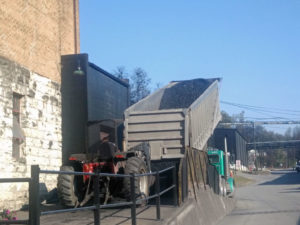
(Credit: Richard Thomas)
Sustainability and Environmental Impact: Technology for a Greener Future
As the spirits industry becomes more conscious of its environmental impact, technology is playing a crucial role in promoting sustainability.
- Energy Efficiency: Distilleries are adopting energy-efficient technologies to reduce their carbon footprint. Solar panels, energy-efficient cooling systems, and waste heat recovery systems are becoming standard. These technologies help distilleries lower their energy consumption and operational costs while supporting environmentally-friendly practices.
- Water Management: Smart irrigation systems and water recycling technologies are helping distilleries use water more efficiently. By monitoring soil moisture and weather conditions, these systems optimize irrigation schedules, reducing water waste. Additionally, technologies for recycling and repurposing water help minimize the environmental impact of distilling.
- Waste Reduction: Technologies for managing and repurposing by-products of distilling, such as grain mash, are gaining traction. These by-products can be used to create value-added products like animal feed or bioenergy. This approach not only reduces waste but also opens new revenue streams for distilleries.
Conclusion
Technology is revolutionizing the whiskey business in ways that were once unimaginable. From precision agriculture and automation to data analytics and immersive consumer experiences, these innovations are enhancing every aspect of distilling. As the industry continues to embrace new technologies, the future of whiskey promises to be more efficient, sustainable, and engaging than ever before. Cheers to the exciting transformation of the spirits world!
These advancements in technology are not just beneficial for whiskey production; they also hold promise for other areas of the spirits industry. For example, craft distilleries making brandy can apply similar techniques to optimize production and enhance quality. Likewise, wineries looking to venture into brandy production can leverage these technologies to ensure a smooth transition and achieve high standards in their new endeavors.









